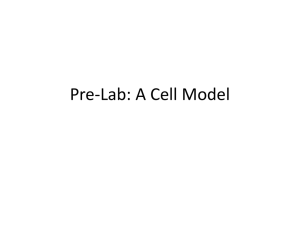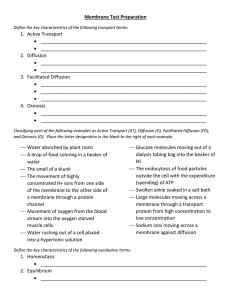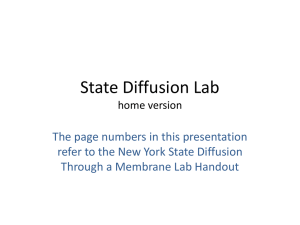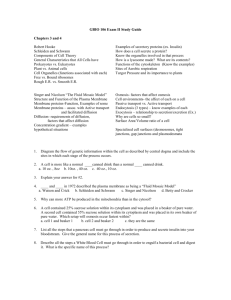Using the following format re-write the lab in your lab notebook.
advertisement
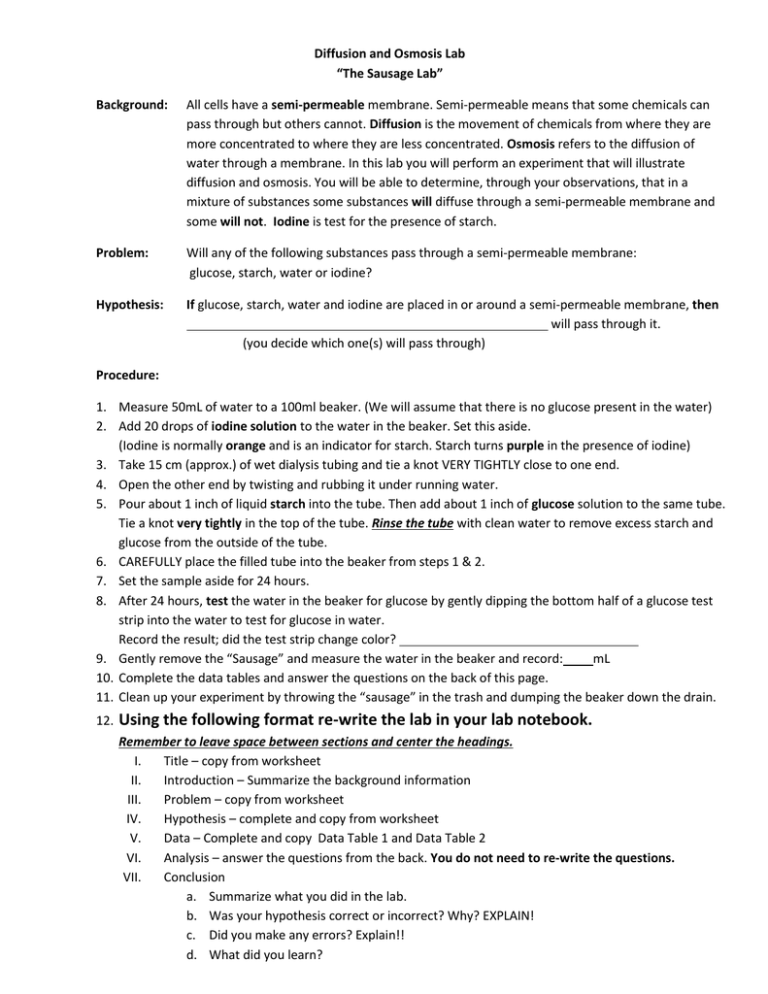
Diffusion and Osmosis Lab “The Sausage Lab” Background: All cells have a semi-permeable membrane. Semi-permeable means that some chemicals can pass through but others cannot. Diffusion is the movement of chemicals from where they are more concentrated to where they are less concentrated. Osmosis refers to the diffusion of water through a membrane. In this lab you will perform an experiment that will illustrate diffusion and osmosis. You will be able to determine, through your observations, that in a mixture of substances some substances will diffuse through a semi-permeable membrane and some will not. Iodine is test for the presence of starch. Problem: Will any of the following substances pass through a semi-permeable membrane: glucose, starch, water or iodine? Hypothesis: If glucose, starch, water and iodine are placed in or around a semi-permeable membrane, then will pass through it. (you decide which one(s) will pass through) Procedure: 1. Measure 50mL of water to a 100ml beaker. (We will assume that there is no glucose present in the water) 2. Add 20 drops of iodine solution to the water in the beaker. Set this aside. (Iodine is normally orange and is an indicator for starch. Starch turns purple in the presence of iodine) 3. Take 15 cm (approx.) of wet dialysis tubing and tie a knot VERY TIGHTLY close to one end. 4. Open the other end by twisting and rubbing it under running water. 5. Pour about 1 inch of liquid starch into the tube. Then add about 1 inch of glucose solution to the same tube. Tie a knot very tightly in the top of the tube. Rinse the tube with clean water to remove excess starch and glucose from the outside of the tube. 6. CAREFULLY place the filled tube into the beaker from steps 1 & 2. 7. Set the sample aside for 24 hours. 8. After 24 hours, test the water in the beaker for glucose by gently dipping the bottom half of a glucose test strip into the water to test for glucose in water. Record the result; did the test strip change color? 9. Gently remove the “Sausage” and measure the water in the beaker and record: mL 10. Complete the data tables and answer the questions on the back of this page. 11. Clean up your experiment by throwing the “sausage” in the trash and dumping the beaker down the drain. 12. Using the following format re-write the lab in your lab notebook. Remember to leave space between sections and center the headings. I. Title – copy from worksheet II. Introduction – Summarize the background information III. Problem – copy from worksheet IV. Hypothesis – complete and copy from worksheet V. Data – Complete and copy Data Table 1 and Data Table 2 VI. Analysis – answer the questions from the back. You do not need to re-write the questions. VII. Conclusion a. Summarize what you did in the lab. b. Was your hypothesis correct or incorrect? Why? EXPLAIN! c. Did you make any errors? Explain!! d. What did you learn? Data Table 1 Inside Tubing (in the “Sausage”) Is Starch Is Iodine Is Glucose Color Present? Present? Present? Initial Outside Tubing (in the beaker water) Is Starch Is Iodine Is Glucose Color Present? Present? Present? No Final Data Table 2 Amount of Water in the Beaker (in mL) Initial Final Analysis Questions: Answer in complete sentences!!! (You do not have to re-write the questions in the lab book, but your sentence should reflect the question.) 1. What changes, if any, did you notice inside the “sausage”? 2. What changes, if any, did you notice to the water in the beaker? 3. What happened to the iodine in the beaker? Did it pass through the membrane? a. How do you know? What results did you see? 4. What happened to the starch? Did it pass through the membrane? a. How do you know? What evidence did you see? 5. What happened to the glucose? Did it pass through the membrane? a. How do you know? What evidence did you see? 6. Did any water diffuse through the membrane? What is this called? 7. What material(s) diffused through the membrane? 8. What material(s) did not diffuse through the membrane? 9. Why were some materials able to pass through the membrane and others were not? Reminder: YOU WILL BE GRADED BASED ON WHAT YOU WRITE IN YOUR LAB NOTEBOOK ONLY!!
